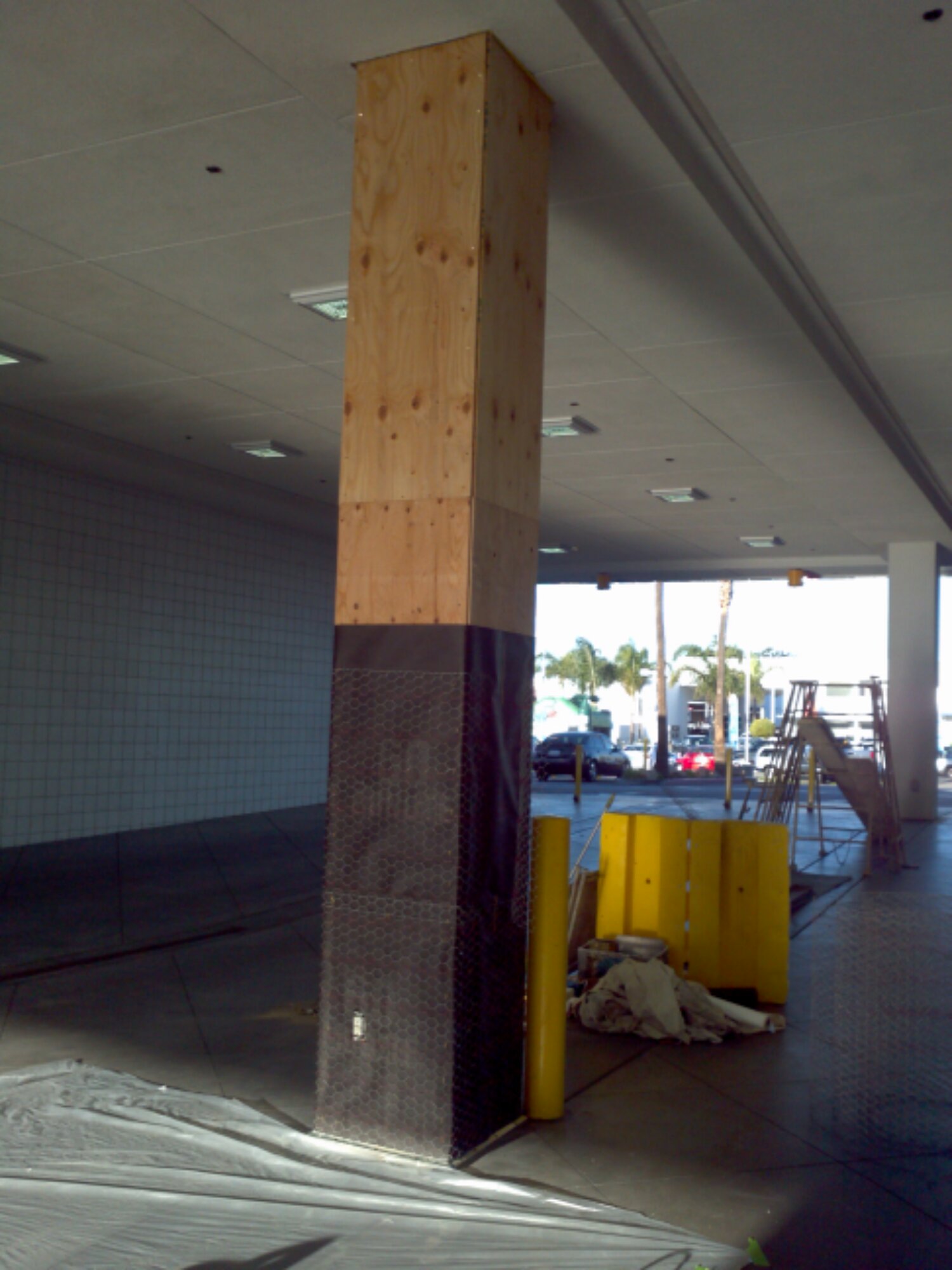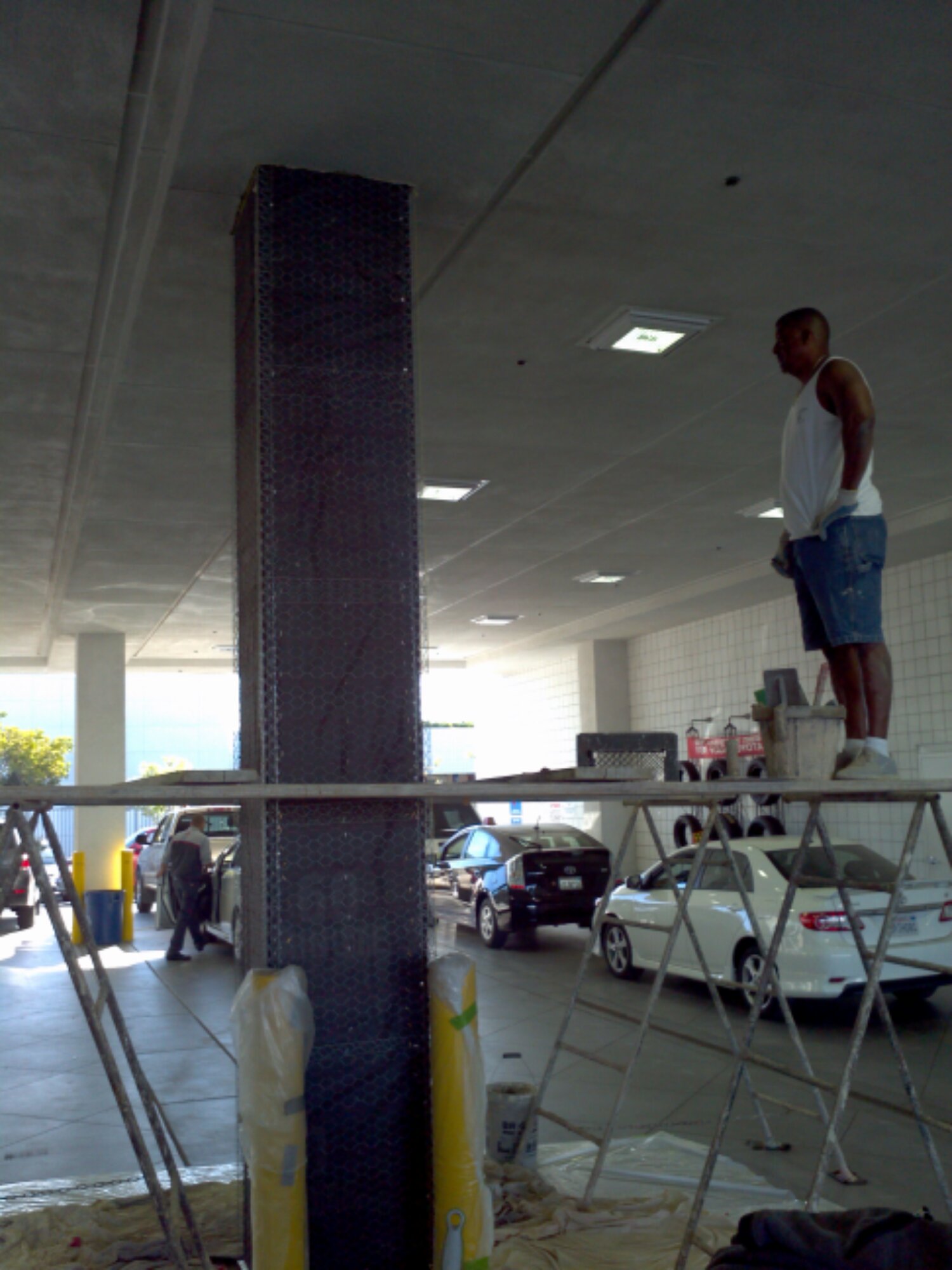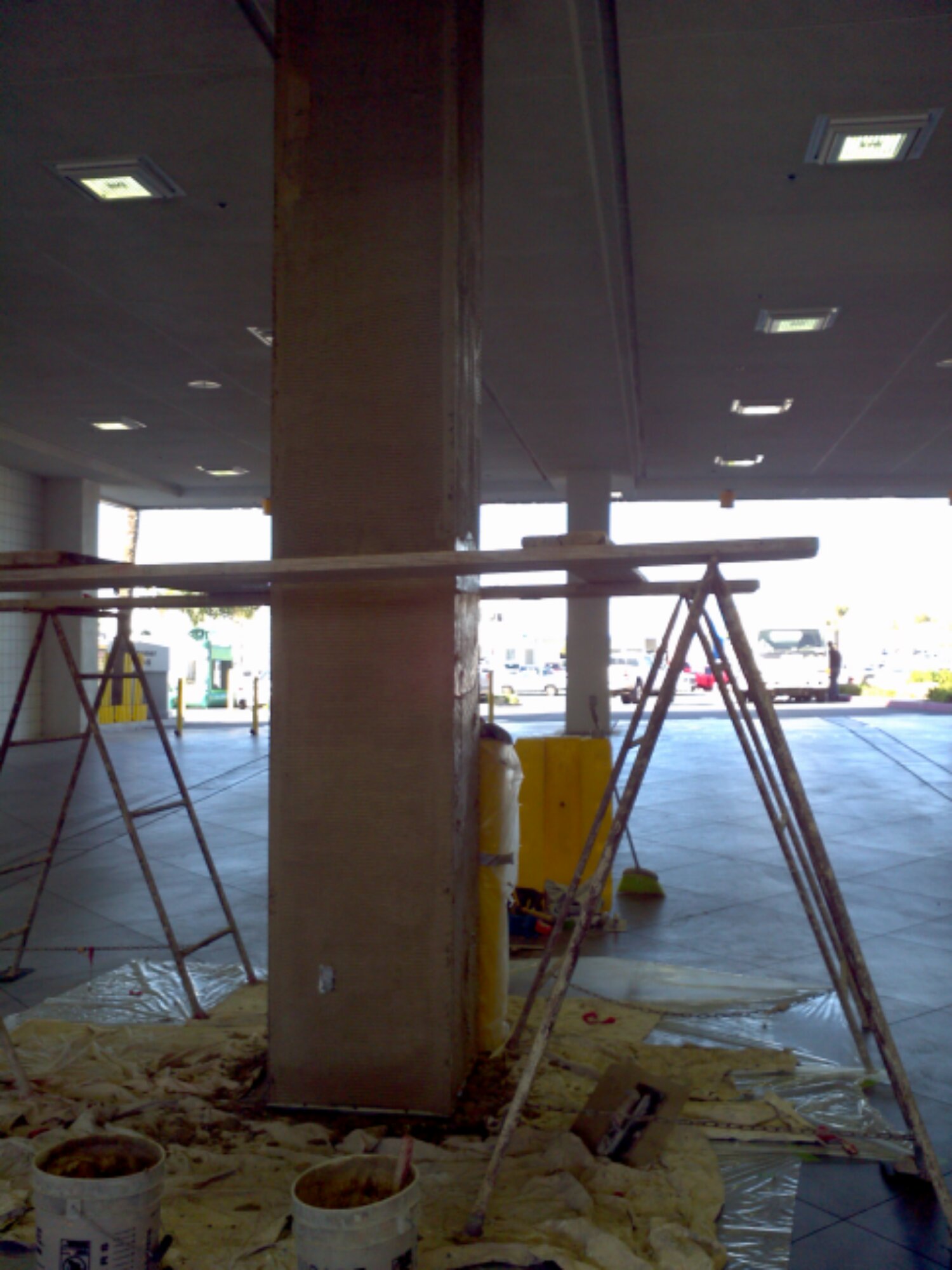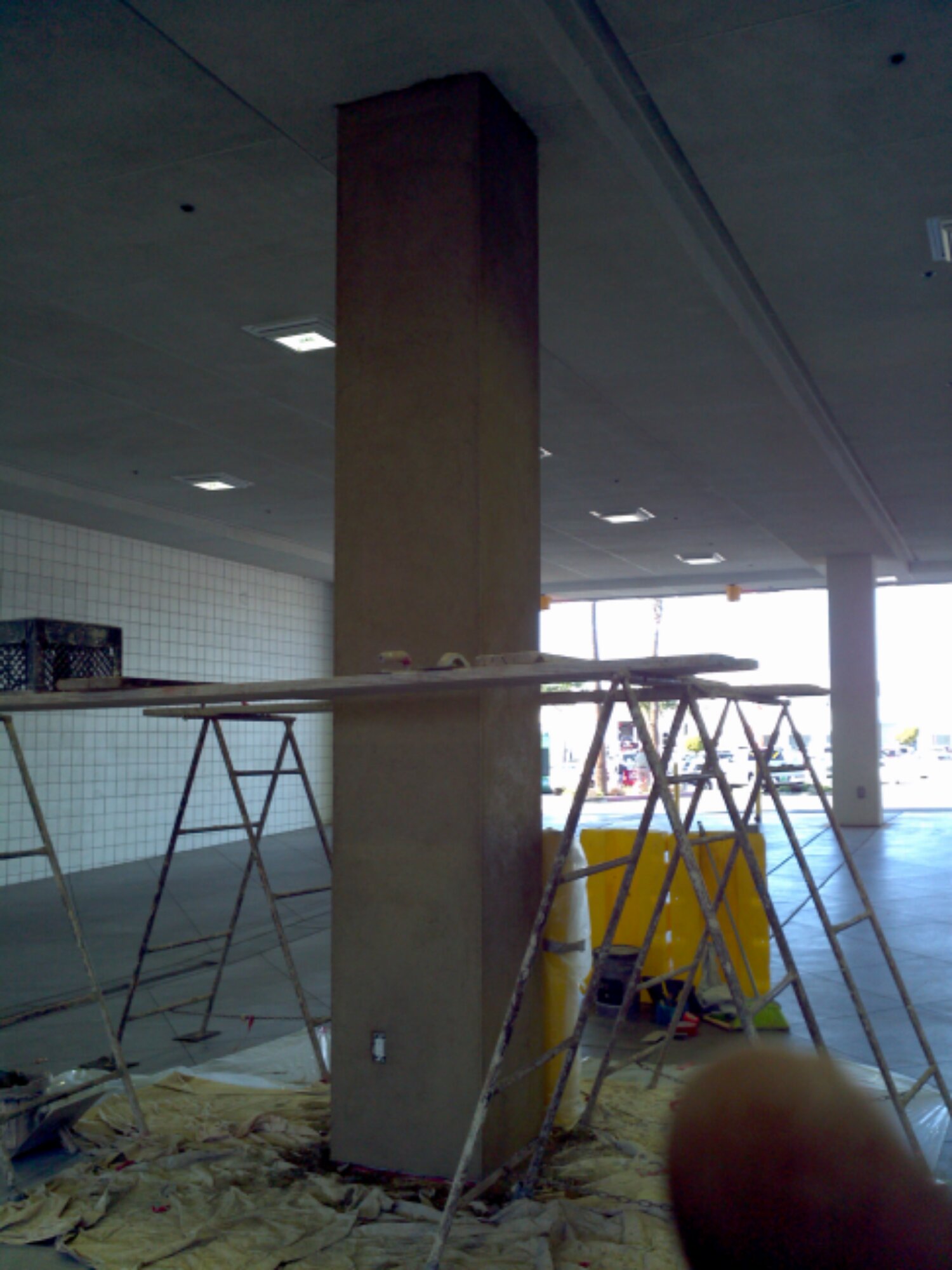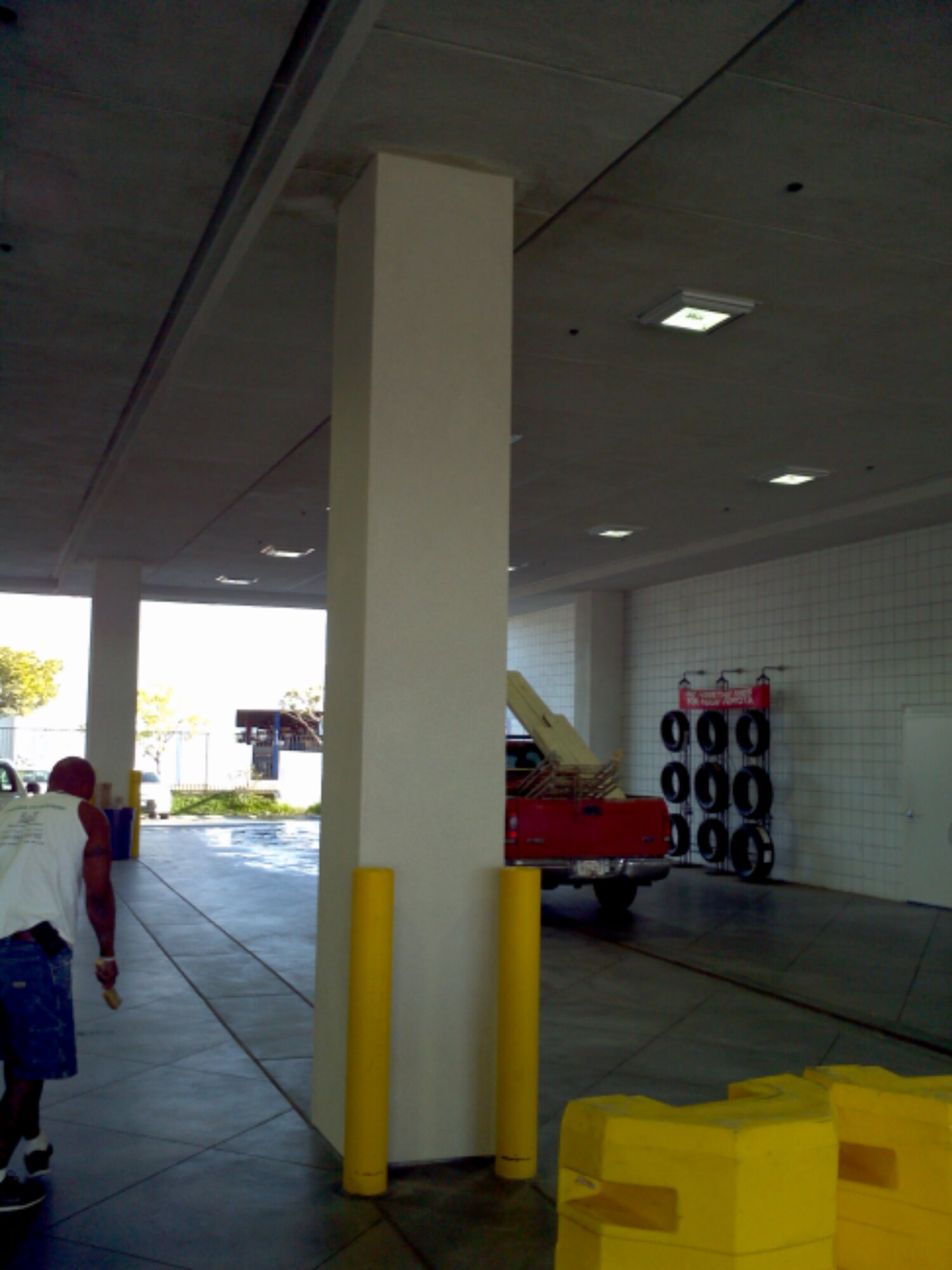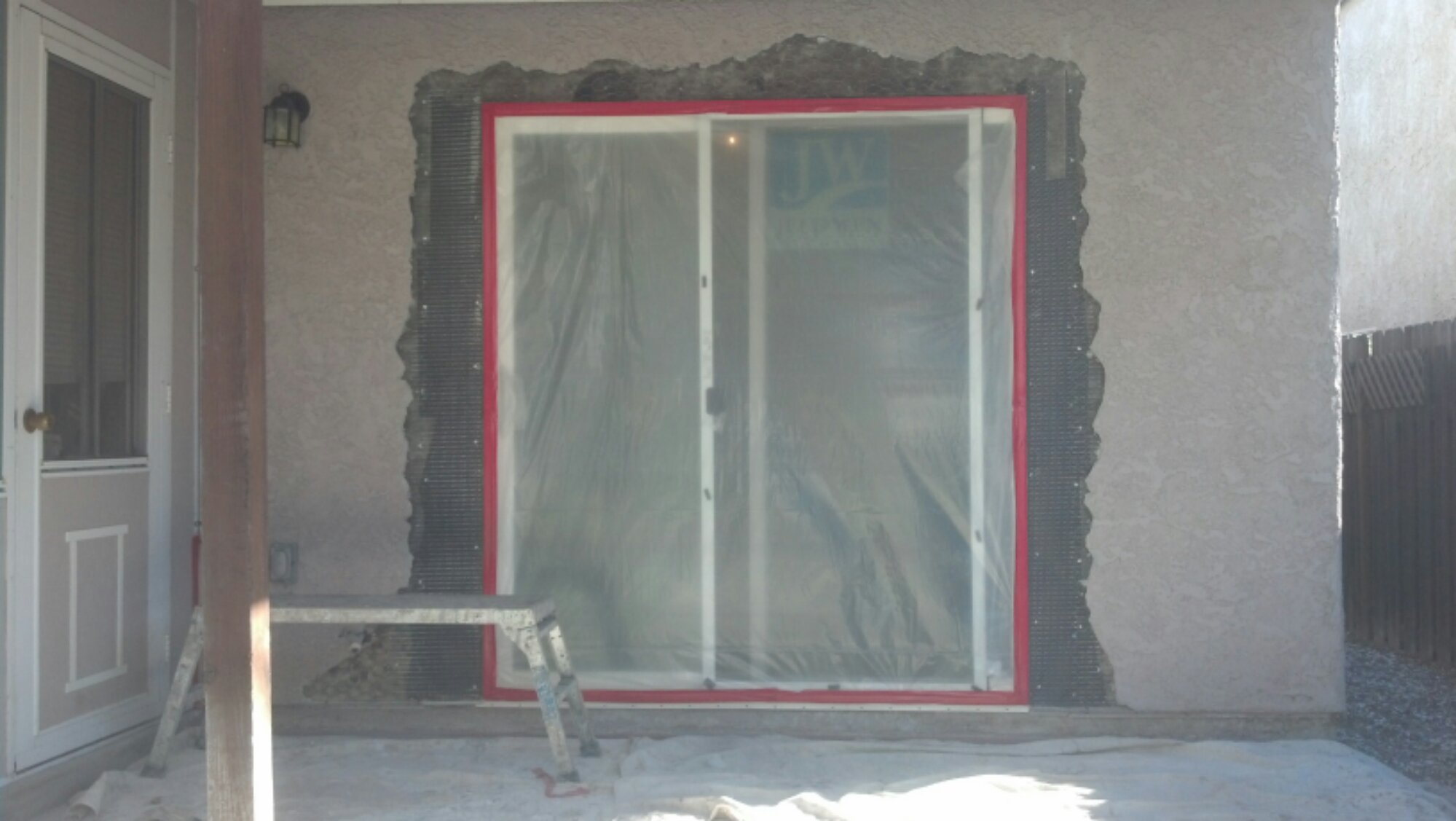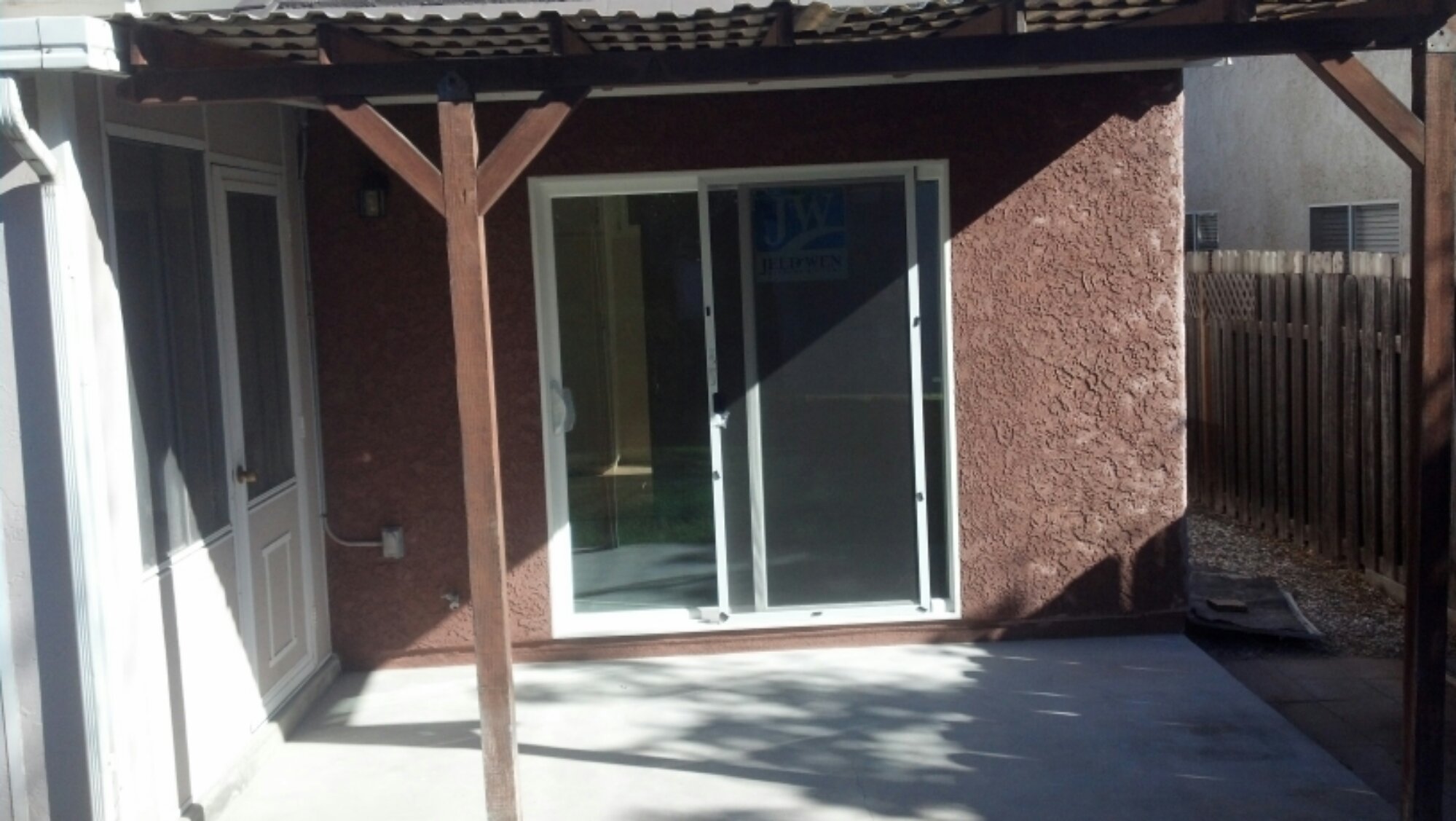We usually start with bare wood, or studs…we put various stucco stops (in this case screed metal at the bottoms) and overlap paper to water proof
We then put metal lathing over the paper, metal corner beads for angles, caulk any exposed areas, set scaffold, and prep the areas that we want to stay clean
We then put bonder on all pre-existing plastered surfaces that will touch wet cement and apply a scratch coat to cover the metal
Then a brown coat
Then a finish coat (in this case a 16/20 sand finish to match existing). We take special care to leave our jobs sharp, and clean
To have a window or door installed on a stucco wall stucco is cut to allow the sliding door to be screwed or nailed into studs…A waterproofing membrane is set behind the slider before it is secured to the wall.
We then prep the wall for repair by first masking surfaces we don’t want to be touched. Second we chip the edges around the slider to give us about six inches of good paper and wire, and to not have any straight stucco cuts as they would lead to cracks. Third we secure metal stops or screed at the bottoms of the walls. Fourth we stick bituthene around the window or door that was installed to add extra waterproofing. Fifth we overlap asphalt paper properly, and secure our metal lath over the top making sure to caulk any exposed areas around pipes, fixtures, or any other openings.
We then add our scratch and brown coats using rapid set additives. The additives cause the cement to dry extremely hard and fast, and allow us to apply a finish coat on the same day.
We then add a finish coat to match existing, and do a thorough clean up…Our window patches are guaranteed not to leak, and can be done usually in one day.

